The KWPN Stallion Show De-brief:
The Dressage Commission
by Christopher Hector and Gemma Alexander
One of the things that amazed me on my first visit to the KWPN stallion show, was the frank and open assessments offered by the Commission members at the press conferences, ‘typical Dutch’, I was told with a smile. I had been more used to party-line-speak from the German stallion assessors, and found the Dutch straight forwardness refreshing. This tradition continues.
We had all three members of the Dressage Commission, Marian Dorresteijn, Johan Hamminga and the chairman, Bert Rutten, at the presser, and the organizers were kind enough to have a little English language session after the main conference… so here we go:
Looking at the colts you have seen over the past two days, what would you say are the strengths, and what are the weaknesses you have seen?

Bert Rutten: “In the horses we graded, I don’t think we have seen a lot of weaknesses. What we have seen is that in general we have uphill horses, a lot of uphill horses with a strong hind leg and a nice uphill shoulder, and good moving horses. We are speaking of a strong year this year.”
There is still a little tendency for the hind legs to be out behind in the trot…
“Sometimes, there is still the odd tendency where they go too far out behind, then we don’t invite them to Ermelo for the performance test. But if they are just a little out, and they have a lot of scope, and they really come off the floor and they have self carriage, then we still invite them to Ermelo for the stallion testing – Ermelo is the test, how good are they, and then we will see, can they come under themselves, yes or no. The ones we took that were a little out behind, when they come in hand in the presentation, when they trot them in hand and hold them back a little bit, then if they come under, then that’s the indication that we look for, if the pedigree and everything else is interesting.”
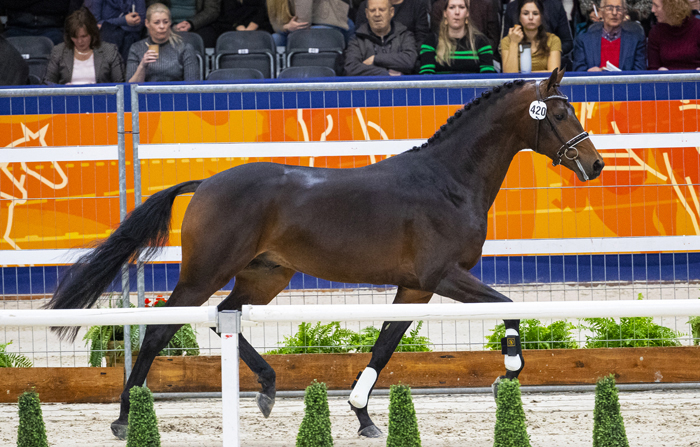
The Dutch / German cross: Magic Boy, was bred in Holland but is two thirds German, by Fürstenball out of a Damsey / Flemmingh mare. He was selected for the performance test.
We saw over and over the cross Dutch / German, German / Dutch, what do you think you are getting from the German bloodlines?
“The blood affinity (Mr Rutten is talking about the concentration of the same bloodlines, line breeding or in breeding) goes down, that’s in the first place, the Germans, they also have good dressage horses so I think the cross breeding between KWPN and German horses is very important, also to keep the blood affinity down in the dressage community.”
Thoroughbred Blood %
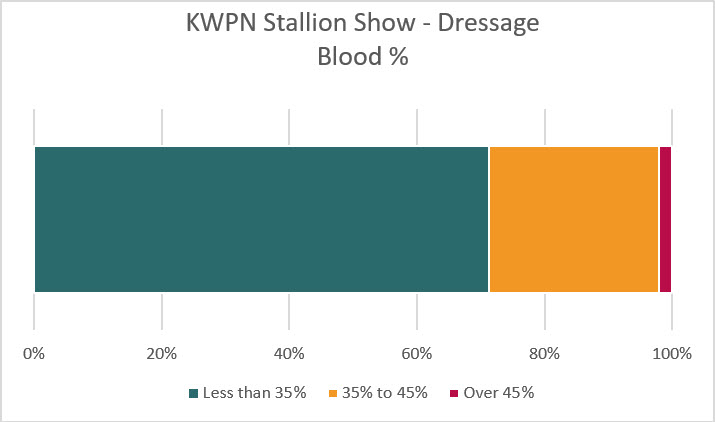
Unsurprisingly, the Thoroughbred blood concentration for the dressage stallions sits far below that of the jumpers; the vast majority of stallions in the lineup (67 of the 96 initially presented) have a blood concentration of less than 35%. The lowest concentration of blood was in the selected stallion Moreland Turfhorst (Glock’s Toto Jr / Don Schufro) at 22.7%, while the highest was seen in the non-selected Maximus PP (Ferdinand / Burggraaf) at 50.6%; interesting to see jumping supersire Burggraaf in the dressage lineup!
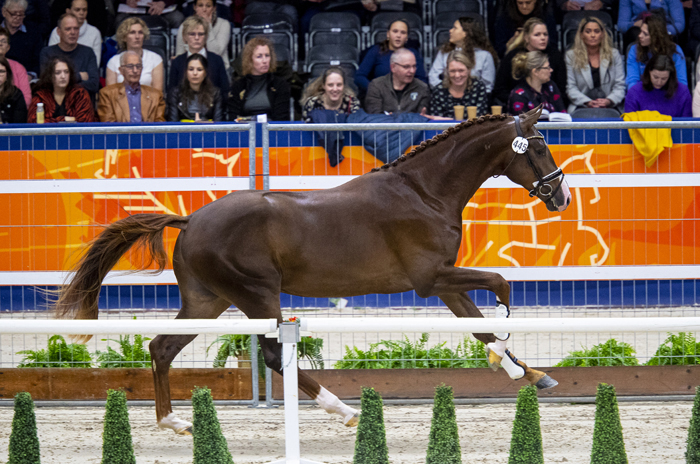
The lowest concentration of blood was in the selected stallion Moreland Turfhorst
At the press conference after the jumping horses licensing, the chairman said, oh we are not like the Belgians we don’t have a problem with in-breeding, but looking at the first five horses that made it to your presentation, the first had two crosses of Ferro, two crosses of Jazz, the next had two Jazz, then Ferro two, Jazz two, Krack two, Ferro three, is this a welcome consolidation of bloodlines, or a potential problem – too much blood affinity?
“We are aware of that and we try to bring it down as much as we can, but it just shows that these bloodlines are bringing the best horses. When they have those stallions in their pedigree, we are not going to say, we don’t want you because you have Ferro, or you have Jazz… we select the best horses.”
Linebreeding…
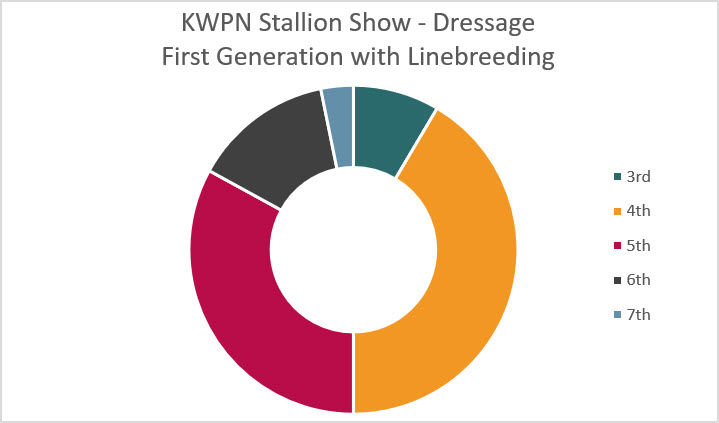
Of the 96 stallions in the initial lineup, eight had linebreeding as close up as generation three; including the selected and premium Mowgli V.O.D. (Desperado / Jazz), who has Jazz in generations three and five, as well as Ulft twice in generation six. Similar to the jumpers, the dressage stallions had the majority of their linebreeding in generations four and five (39 and 31 stallions respectively), while 13 had it first appear in generation six, and three in generation seven.
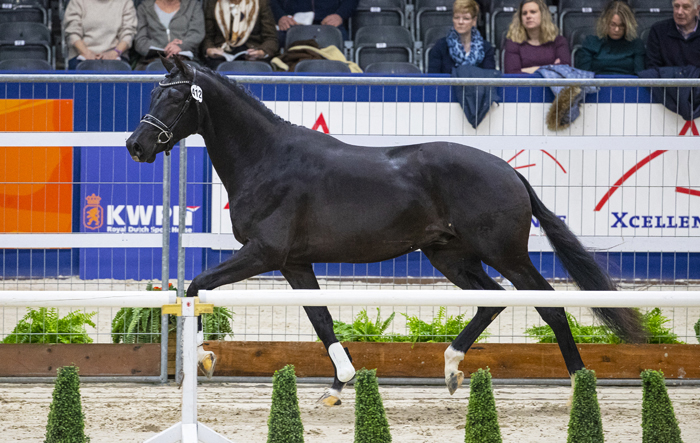
Most Wanted – three crosses of Ferro…
article continues below advertisement
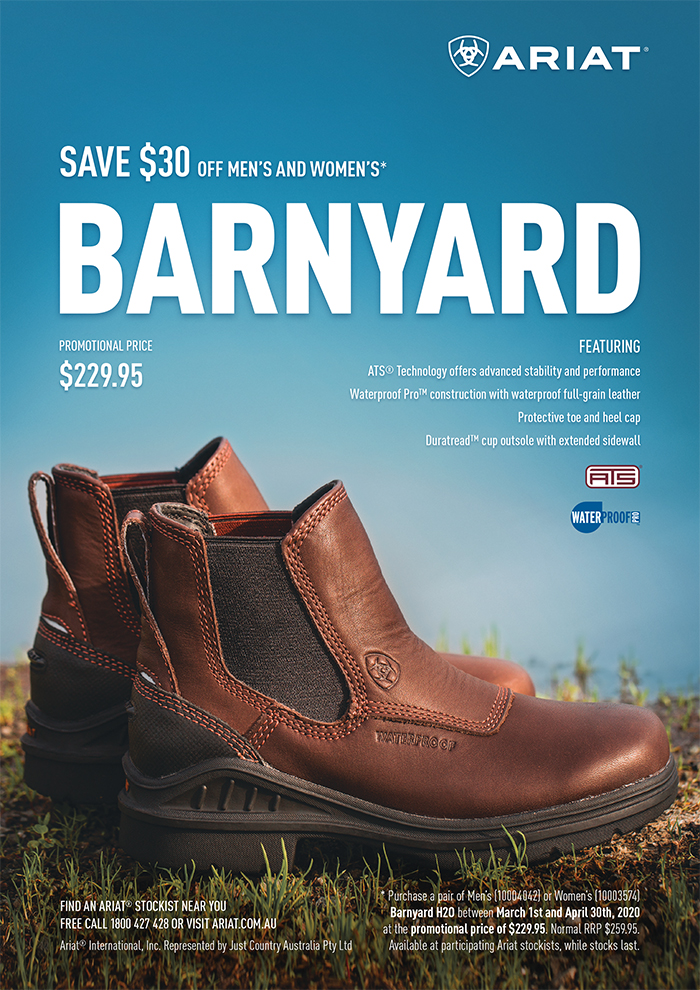
It was good that we saw some of the younger stallions represented with their progeny…
“We try to give the younger stallions as much chance as we can, so that we know as soon as possible how they breed, how they are under saddle, and we want from the young stallions, if possible, as soon as possible, horses in Ermelo so that we know how they are behaving under saddle.”
Which of the new stallions impressed you?
“We will know in Ermelo, you can’t say yet. We have some really nice horses from Franklin, from Daily Diamond… we will see in Ermelo what they bring to us.”
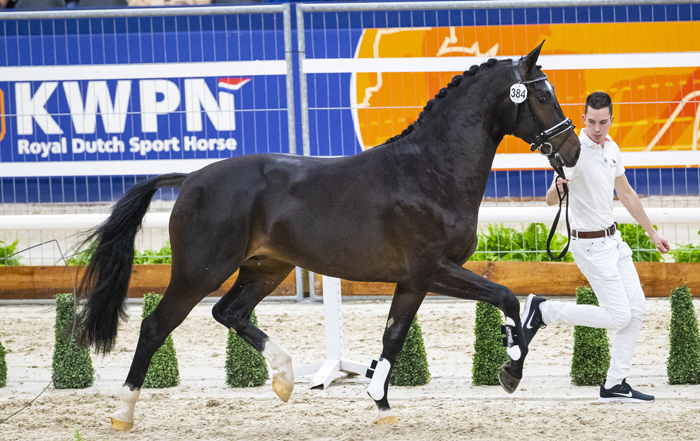
One of the impressive sons of Franklin – Mamorkus, out of a Jazz mare
It’s that important, the performance test?
“The most important, it’s the only thing that is important. We breed for top sport, that’s our goal, and you have to select as close as possible to your goal.”
Sire Age
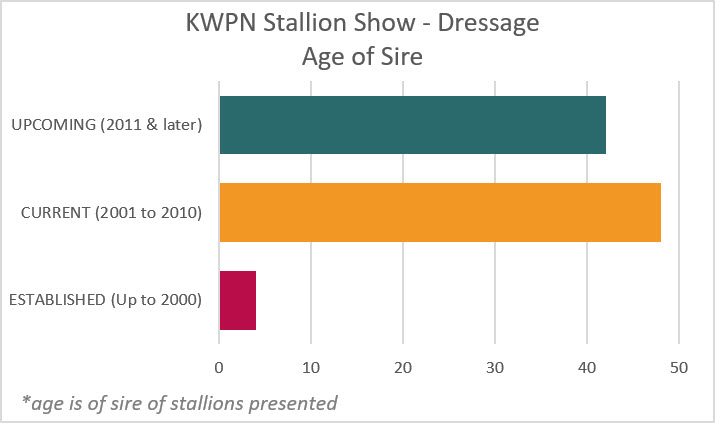
In direct contrast to the jumpers, established sires make up only a very small proportion of the sires of the dressage stallions presented, with just four of the original 96 stallions presented being by a sire born in 2000 or earlier. This is likely due to the fashions in dressage having changed significantly over the decades; an Olympic winner from 20 years ago would likely not be successful in todays competitions. Stallions born from 2001 to 2010 were the most represented, with 48 stallions having sires in this age bracket. Of the six stallions awarded premium, four had ‘current’ sires, while there was one each with sires from the ‘upcoming’ and ‘established’ age groups.
more below the advertisement
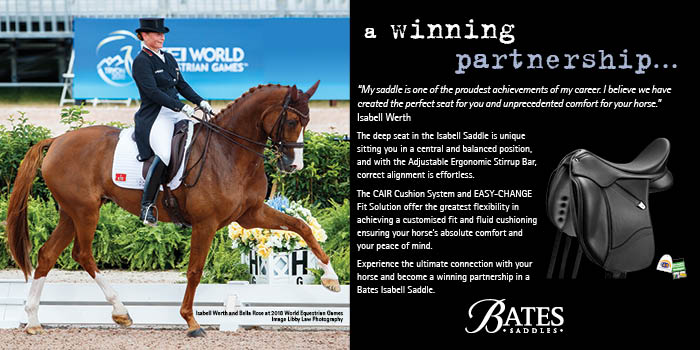
This question is for Marian Dorresteijn- did you come to this commission as a rider, as a breeder…?
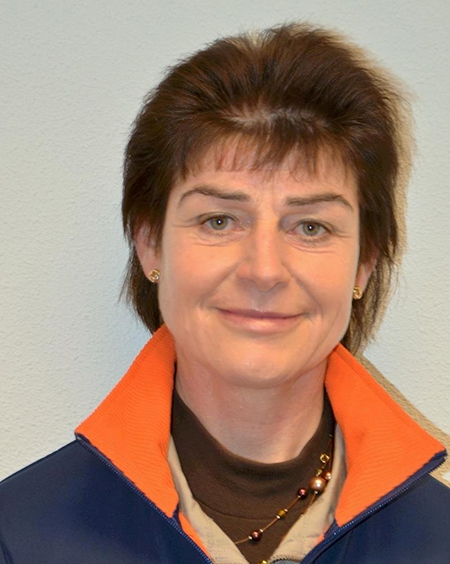
“I think both, I have also competed in Grand Prix, my sister rode in the Olympic Games of Sydney, on Ferro, and my niece rode in the Olympic Games of Athens on Idokus, so my family are horse breeders and also riders. I have a small stable where we breed with some interesting bloodlines that are very successful in sport.”
I can’t think of any other licensing commission in Europe with three Grand Prix riders…
Bert Rutten “And what’s more all three of us are still training every day, horses up to Grand Prix, as well as our inspector, Fleur, also a Grand Prix rider, so we are basically a team of riders.”
Johan Hamminga – can I have your impressions – you are new to the commission this year…
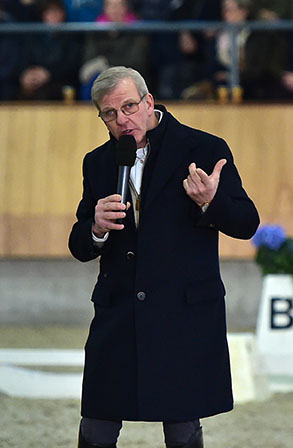
“It was my first show as a member of the committee, but we started in Ermelo with the first inspection, and I have learned a lot about the correctness of the horses, about conformation. Then we saw the horses in the arena, free moving, so that was more my thing and then we lunged the horses, and now we are here in den Bosch. It’s the most interesting thing, to be close to all the horses and hear the opinions of your colleagues. I’ve learnt a lot.”
Everyone gets excited about the trot but you guys seemed to be looking very closely at the canter, and at the horses that went disunited in the canter…
Bert Rutten: “You know how many points there are in the Grand Prix for canter, without canter, you don’t have a Grand Prix horse. Trot is not that important in a Grand Prix any more. Of course we like horses that can trot, and have an extension but what is even more important is that the horse can collect and sit, can bring himself up in the front, that’s also important for passage, piaffe. When you have a horses that has difficulty in the canter, difficulty in the changes, the change you get in basically every movement of the Grand Prix, when you talk a zig zag, double marking, you have a change at every change of direction, in between the pirouettes you have a change, after the end of the extended canter, change, the one tempi changes, double marker, two tempi changes. Basically every movement that you have to do in the canter has changes. A horse that can’t canter and has difficulty in the changes, forget it! Maybe for a professional rider you can make it a Grand Prix horse but it is never going to be a top horse. For a top horse they almost have to do it by themselves.”
Mr Rutten, I’m told that in the walk you are not just looking for over-track, you are looking for the beginnings of piaffe…
“We are looking for over-track, but over-track is not the only thing. In the Grand Prix, collected walk is a double marker and extended walk is a double marker. Young horses you need a huge walk with a lot of over-track to get that 9 or a 10, in the Grand Prix it is important that you have that over-track but even more important is that the over-track can come back on the hind leg, so that they can collect towards the piaffe, or going into a passage, and most important of all is that you keep clean rhythm, that you have a clean, active, four beat.”
Johan Hamminga: “In the walk it is very important that the horse is bending through all the joints, and that we see movement and suppleness in the back.”
Bert Rutten: “They have to walk like a Rooster going to the Chickens!”
It seemed like a good note to end on…
Want to breed to the finest stallions in Holland AND Germany? Frozen semen is available from International Horse Breeders, check them out…
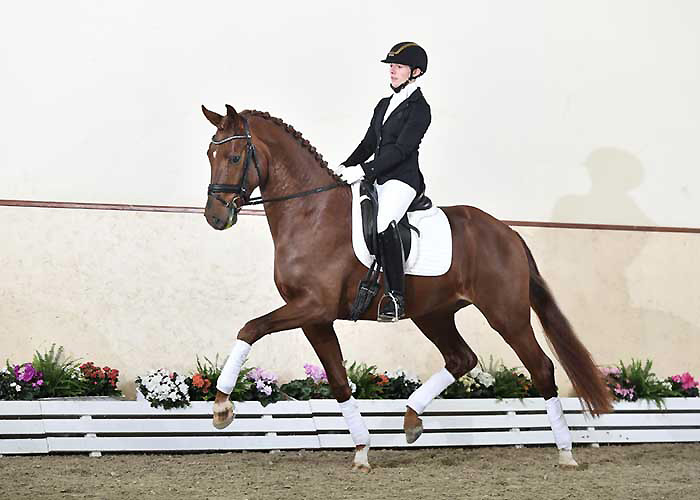
Like Fürst Jazz combining Jazz and the German ‘F’ line

